Situation Report: China's Unprecedented Spring Naval Campaign
Overshadowed by the ongoing war in Ukraine and the emerging war between Israel and Iran, China has embarked on a naval campaign of unprecedented scale in recent weeks.
Overshadowed by the ongoing war in Ukraine and the emerging war between Israel and Iran, China has embarked on a naval campaign of unprecedented scale in recent weeks. This series of naval operations begun in May has featured the simultaneous use of three aircraft carriers, with two carriers deployed together beyond the first island chain, and one carrier deployed for the first time beyond the second island chain. The events mark a significant achievement for the Chinese People’s Liberation Army Navy (PLA Navy), indicating a growing professionalism and capability of the world’s largest navy.
OVERVIEW:
Three Chinese Carriers at Sea at Once
In the past month, China has had its three aircraft carriers, the Liaoning, Shandong and Fujian, in operation at the same time.
The Liaoning, a refurbished Soviet vessel, and the Shandong, China’s second fielded and first indigenously produced carrier, have spent weeks conducting naval exercises extending into the western Pacific Ocean.
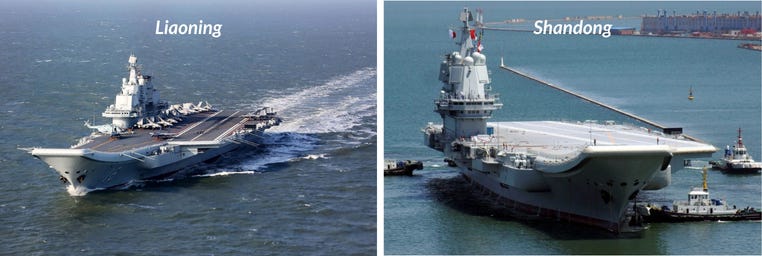
Meanwhile, the Fujian, China’s third and most advanced carrier, began its eighth set of sea trials near the Chinese coastline in May.
The Fujian carrier. Source: CCTV (Chinese State Media) on YouTube
Two Chinese Carriers Operate Beyond the First Island Chain Together for the First Time
This round of Chinese naval exercises was the most ambitious to date. For the first time, two Chinese carriers conducted deployments beyond the first island chain together. The Liaoning crossed the first island chain at the Miyako Strait and advanced into the Philippine Sea on May 27. It was followed by the Shandong that crossed through the Luzon Strait between Taiwan and the Philippines on June 7.
The first island chain is a series of islands and archipelagos that enclose China’s near seas of the South China Sea, East China Sea, and Yellow Sea. The islands run from the Japanese main islands southwest to Taiwan, the Philippines, and Malaysia. The first island chain forms a strategic frontier, controlled by US allies, that helps to contain Chinese naval activity close to its shores.
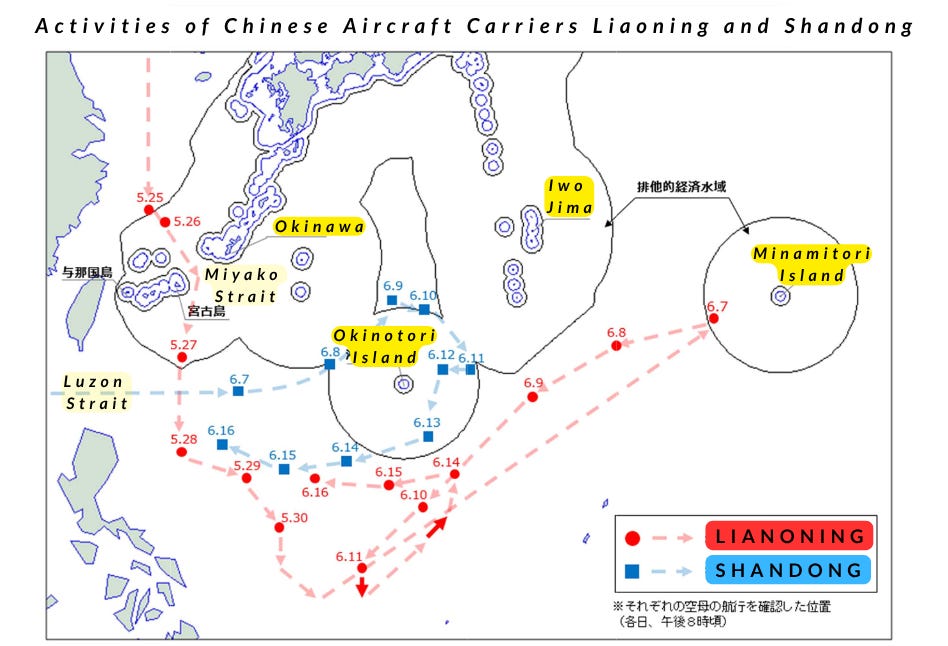
During their deployments both the Liaoning and the Shandong task forces actively tested the Japanese Maritime Self-Defense Forces (JMSDF). On June 7, two J-15 aircraft launched from the Shandong engaged in aggressive maneuvers near Japanese P-3 Poseidon reconnaissance plane, coming within 50 meters of the aircraft. Japanese officials also reported that the Liaoning conducted drills within Japan’s Exclusive Economic Zone (EEZ) around Minamitori Island on the same day. Japan announced that the Shandong conducted similar military drills in the EEZs near Iwo Jima and Okinotori Island the following week between June 9 and 13.
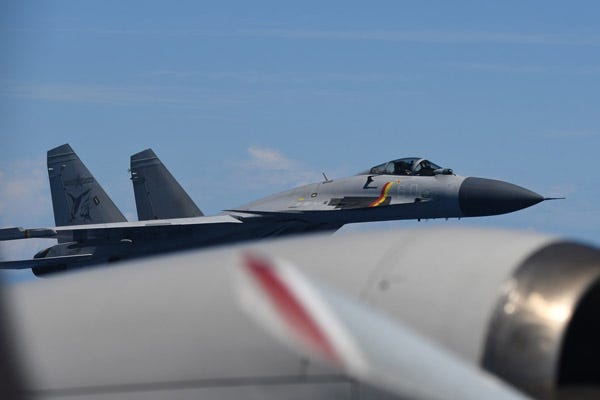
The Liaoning Crosses The Second Island Chain for the First Time
What made the already unprecedented show of sea power more significant was a report on June 9 by the Japanese Ministry of Defense which announced that it had spotted the Liaoning and an accompaniment of two destroyers and two frigates crossing the second island chain, between the southern Japanese islands of Ogasawara and the US territory of Guam, for the first time.
The second island chain is a string of small islands running from the southern coast of Japan through the Northern Mariana Islands and Guam down to Indonesia. The islands, mostly controlled by the US and its allies, form a screen through which the Chinese navy must pass to enter the open ocean. Strongpoints along the second island chain, notably in Guam, allow the US to contest Chinese movements at sea, secure the logistics of US bases within the first island chain and help defend against a blockade or invasion of Taiwan.
The Fujian Already at Work Projecting Power During Sea Trials.
The Fujian, China’s newest and most advanced carrier, began its eighth set of sea trials near the mouth of the Yangtze River during the last week of May. This round of sea trials was used to test the ship’s ability to launch aircraft with its new electromagnetic catapult. While the ship may not be officially commissioned until the end of the year, it is already being used to project Chinese power along its coastline. South Korean officials have reported that the Fujian’s sea trials were used as a pretext to temporarily restrict South Korea’s access to shared waterways in the western portion of the Yellow Sea.
BIGGER PICTURE:
China Seeks to Project More Power Than the US in its Near Seas
The current deployment of Chinese carriers is the culmination of an almost two-decade-long naval buildup which began in earnest under Xi Jinping's predecessor, Hu Jintao. China surpassed the US as the world’s largest navy sometime around 2015.
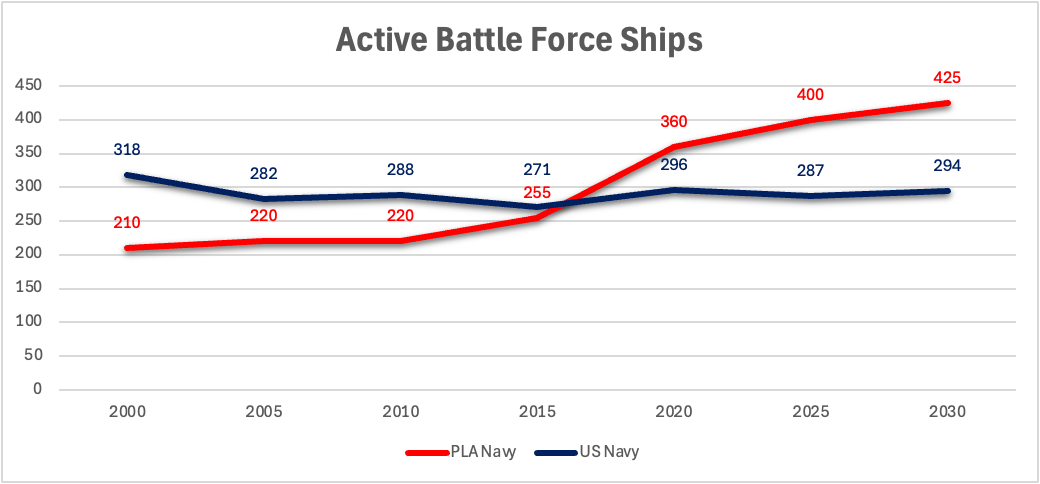
While China has had a more numerous fleet than the US for almost a decade now, it has generally been considered far less powerful. The US Navy is over twice as large as that of the PLA Navy when measured by tonnage. Tonnage, the amount of water a ship displaces, is generally an indicator of the power of warships. Bigger ships tend to possess more firepower, capability and endurance at sea. The US has fewer but far more powerful ships capable of conducting worldwide operations. Much of the difference in overall tonnage comes from the US’s 11 aircraft carriers. China’s recent carrier buildup represents a significant step toward narrowing this capability gap.
The gap in capability narrows further when considering that the US Navy has its ships spread out across multiple oceans and unable to provide overlapping support. The PLA Navy by contrast operates primarily in its near seas of the South China Sea, East China Sea and Yellow Sea. With three carriers at sea simultaneously, and the US repositioning the USS Nimitz from the South China Sea to the Middle East, China now matches the number of US carriers currently in operation in the region. US carrier strike groups remain larger and more powerful task forces than their Chinese rivals, but the rapid advancement of China’s shipbuilding program continues to erode their relative edge.
China is currently building a fourth aircraft carrier, larger than even the Fujian. Recent satellite imagery suggests that this new carrier, the first in China powered by a nuclear reactor, will rival the US’s largest and most advanced Ford-class super carriers in size and aircraft launch capabilities.
IMPLICATIONS:
China is Using its Growing Maritime Power to Rewrite Regional Order
The recent carrier deployments feature both conventional displays of naval might to awe its neighbors alongside a mix of “grey zone” operations to challenge international laws of the sea and intimidate its neighbors.
In their recent deployments, the Liaoning and Shandong repeatedly went out of their way to cross Japan’s exclusive economic zones to conduct military exercises. China then used Japanese protests that resulted to revive disputes over Japan’s claims to ownership of Okinotori Island.
China conducted a similar creeping expansion of its control into the Yellow Sea in late May when it closed parts of its shared EEZ with South Korea to conduct the Fujian’s sea trials. The closure followed the appearance of new Chinese man-made structures within the Yellow Sea’s Provisional Measures Zone (PMZ) shared with South Korea. The structures, that China’s claims are “aquaculture facilities,” have helipads and are large and robust enough to serve as outposts for the Chinese military.
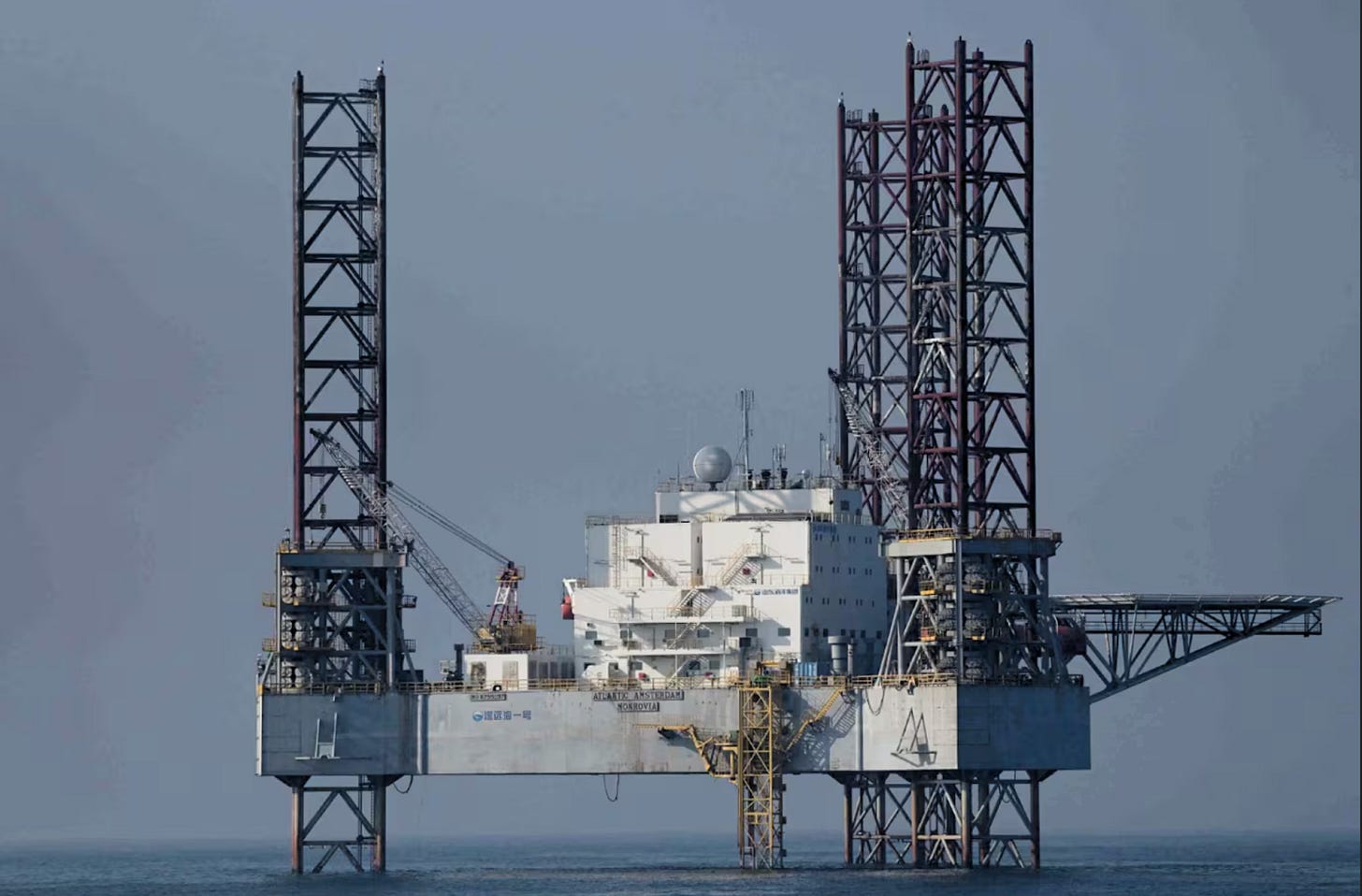
China's actions in both instances mirror early indicators of its multi-year effort to assert control over the South China Sea. This strategy, which top US naval strategist Hunter Stires calls a “Maritime Insurgency” uses Chinese military power to back a united front of Chinese economic and legal measures to delegitimize its neighbors territorial claims. China uses the disputes to box rivals out of their territory with rotating fleets of civilian and paramilitary vessels. These fleets lay the ground work for intensive construction projects, like the recent man-made towers in the Yellow Sea or artificial islands in the South China Sea, which make the Chinese presence permanent. China leverages these footholds to challenge the US-led regional order by restricting navigation and projecting power further from the Chinese mainland and into the heart of its neighbors’ territory.
Enduring Relevance of Aircraft Carriers for Sea Power
China’s militarizing of bases on man-made islands in the South China Sea, has called into question the future dominance of US aircraft carriers in the Indo-Pacific. Ukraine’s demolishing of the Russian Black Sea Fleet with missiles and sea drones has further raised doubts about the future of capital ships in general. While these developments show serious challenges emerging for aircraft carriers, China’s recent naval exercises, and the US’s rapid repositioning of the USS Nimitz to the Middle East, highlight the continued importance of carriers as the backbone of superpower navies.
There is simply no alternative for the wide range of capabilities that carrier strike groups provide. As a result, we should expect that China and the US will continue to invest huge amounts of money to build and maintain the world’s largest and most advanced aircraft carriers. Carrier groups alone provide the ability to launch the large-scale expeditionary military campaigns that both countries require to attack each other and defend their respective interests.



